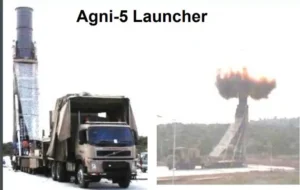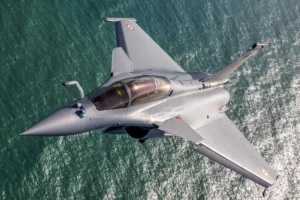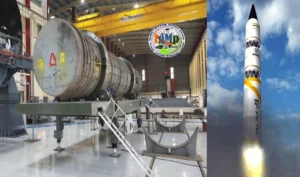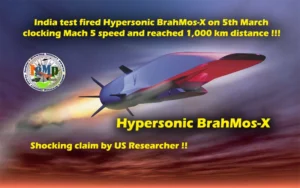The Russian Ministry of Defense (MoD) claimed on August 29 that it shot down a Ukrainian Neptune anti-ship missile, a projectile that had previously garnered attention for striking the Russian Navy’s Project 1164 Slava-class cruiser Moskva in the Black Sea last year.
Ukraine’s ‘Biggest Ever’ Drone Attack On Russia Annihilates Four Ilyushin Il-76 Military Transport Aircraft
This could be the first instance of intercepting Ukrainian anti-ship missiles since the commencement of Russia’s military operation in Ukraine; before this, no records of such interceptions had been documented or made public.
“Air defense systems intercepted two HIMARS multiple rocket launchers, a Neptune anti-ship missile, and two HARM anti-radar missiles,” the Russian MoD said.
The Ministry offered limited details about the incident, refraining from disclosing the date and the location of the event. The Neptune is a coastal defense missile specifically crafted for engaging enemy warships up to 190 miles from the coastline.
But in recent developments, reports have surfaced indicating that Kyiv has seemingly modified some Neptune anti-ship missiles, adapting them for use in a secondary land-attack mode.

Supporting this assertion, there are accounts of Ukrainian armed forces recently utilizing this missile to target and destroy a Russian S-400 air defense battery in western Crimea.
On August 24, prominent Ukrainian journalist Yuriy Butusov reported that the strike was executed using an R-360 Neptune anti-ship missile, modified to serve in a land-attack capacity, aiming for the S-400 air defense battery.
Similarly, Oleksiy Danilov, the secretary of Ukraine’s National Security and Defense Council, affirmed that a new Ukrainian missile successfully targeted the S-400. However, Danilov refrained from providing precise details about the weapon employed in the operation.
Meanwhile, Russia did not share any information regarding whether the Neptune missile they intercepted in the latest event was aimed at sea or land targets. That being said, the employment of this missile undeniably poses a substantial threat to Russian military installations positioned well within their territory.
Land Attack Version Of Neptune Missile
Ukraine is actively advancing its indigenous long-range strike capabilities in light of limitations on using donated weaponry against targets beyond its borders.
In a detailed piece, the EurAsian Times previously discussed Ukraine’s conversion of S-200 ground-launched air-defense missiles into land-attack munitions.
Likewise, Ukraine undertook similar modifications to its Neptune ground-launched anti-ship missiles, which achieved widespread recognition for their role in puncturing and ultimately sinking the Russian navy cruiser Moskva in April 2022.
The RK-360 Neptune missile is derived from a former Soviet cruise missile known as the Kh-35, originally manufactured in the Ukrainian city of Kharkiv.
The entity responsible for developing the Neptune missile, the Luch Design Bureau, was established in 1965 and held an extensive legacy in designing Soviet missile systems.
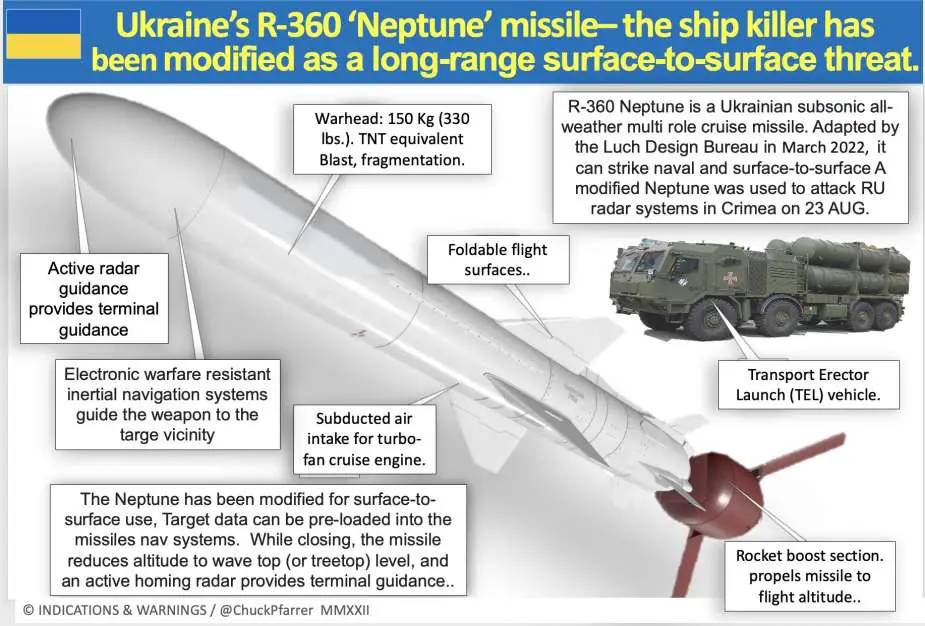
The Neptune, which operates at a low altitude and subsonic speed, is well-suited for its land-attack capability. Adding a land attack ability to the Neptune missile closely follows the trajectory pursued by the RGM-84 Harpoon.
Drawing parallels, the first-generation Harpoon was initially intended solely for anti-ship use, but Boeing, the American missile manufacturer, introduced a land-attack capability in its Block II model during the late 1990s.
This enhancement involved the integration of GPS-aided inertial navigation alongside the Harpoon’s original radar seeker. A radar seeker in isolation effectively strikes ships, as vessels distinctly reflect radar signals compared to the uniform water surface.
However, when targeting ground-based objectives, the surroundings pose a challenge due to the presence of structures, foliage, and uneven terrain. Adding a GPS capability to radar-guided missiles, achieving sufficient accuracy to guide the projectile through these environments becomes feasible.
Luch, demonstrating foresight, initially integrated GPS technology into Neptune’s design. The design bureau has recently introduced further refinements to the missile’s seeker system, aiming to improve the effectiveness of its land-attack capability.
These enhancements are believed to grant the Neptunes the capability to strike targets as far as 225 miles away. With such an extended range, a Neptune battery stationed in the secure vicinity of Odesa could effectively engage and target Russian forces across a substantial portion of Crimea.
Yet, the current quantity of these missiles possessed by Ukraine and their production capacity within a reasonable timeframe remains uncertain. Moreover, doubts persist regarding the effectiveness of this missile despite assertions of initial positive success.
Source link
#KILLER #S400 #Moskva #Warship #Russia #Time #Claims #Intercepting #Ukraines #Neptune #Missile



